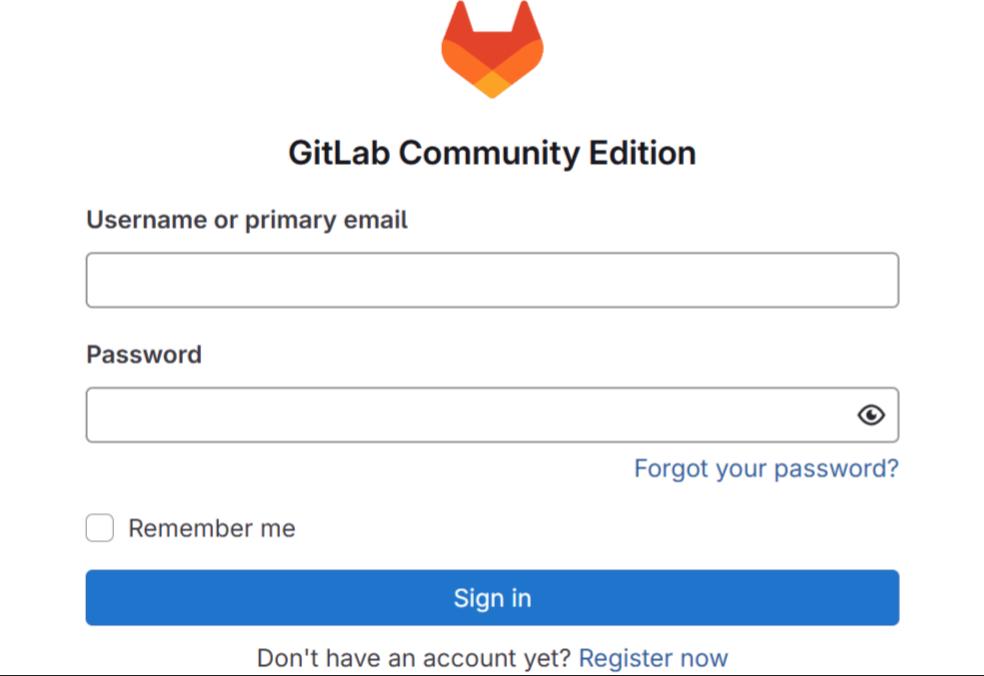March 6, 2025
When working with development tools, having a place to store and manage your code is essential. While many cloud-based services are available, a self-hosted solution offers greater control over versioning and CI/CD pipelines. You can achieve this by setting up your own GitLab server, providing full ownership and customization of your repositories and workflows.

Introduction
If you are reading this, you are probably already familiar with GitLab, and probably already have an account in GitLab Cloud Service or a similar cloud service. If this is not the case, no worries I will briefly explain what GitLab is and why you may want to self-host your own instance.
TLDR;
You just need to jump to the Installing gitlab section and execute the first 2 steps for Debian 12 or follow the instructions from the official site according to your operating system or platform. This is pretty well documented. For instance, Ubuntu distribution takes as little as 5 steps according to the official documentation.
Why you may want a self-hosted GitLab instance.
Customization and Personalization features
Self-hosting a Gitlab instance gives you full control over it, including Admin Area, Users manangement and System settings. In addition you can implement custom Git hooks at server-level to enforce specific policies and performing tasks based on the state of a repository. A self-hosted Gitlab instance allows you to setup a custom authentication workflow with any authentication provider that uses a standard protocol. You can also customize your install with the Gitlab features you need by enabling or disabling feature flags through the rails console for a more streamlined experience.
Access Control
You (or your company) may have an authentication provider where you have centralized control of your users (like LDAP, Active Directory, and SAML) and may want to re-use it instead of having a separate authentication credentials for each user (including yourself).
Security and Privacy
If you are concerned about the treatment of your data in the cloud, have particular policies related to security and privacy or due to the nature of your business have to enforce some requirements then self-hosting Gitlab may be your option. Self-hosting gives you the ability to manage and configure encryption settings, including using internal encryption keys. In addition, you get full access to compliance-related features and logs, aiding in meeting regulatory requirements.
Performance
One of the advantages of self-hosting is that you have the control of the infrastructure where gitlab is installed. That means, if you have some idle computing power in your infrastructure then you can use it for Gitlab CI/CD operation for instance. Also, by disabling features you don’t need or use you may increase the efficiency of your setup.
Installing gitlab
Step 1. Install and configure the necessary dependencies
There are many different operating systems supported with detailed instructions. When writting this I used Debian 12. Dependencies vary slightly for each system but you should be able to get the dependencies through the corresponding package manager. For Debian/Ubuntu for instance
$ sudo apt-get update
$ sudo apt-get install -y curl openssh-server ca-certificates perlYou can optionally install postfix if you want to send notification emails in the same installation, but you can also connect to an external SMTP server, if so, you can skip the following command line.
$ sudo apt-get install -y postfixStep 2. Add the GitLab package repository and install the package
To add the package repository you can add the following line, it will download the setup script and install Gitlab Community Edition. The official documentation instructions by default are written so that you install the Enterprise Edition (gitlab-ee) but you can change the command by updating the URL to point to the Community Edition (gitlab-ce) or changing the URL to append ?version=ce depending on what you want. You can see the differences between editions in the official site
$ curl https://packages.gitlab.com/install/repositories/gitlab/gitlab-ce/script.deb.sh | sudo bashThe script will update your package manager cache and install a few additional required packages. After this, you can install Gitlab and specify the URL that you want to use to access it, in my case I used http://gitlab-dev.local but you can use whatever domain you own. Note I didn’t use https protocol, instead I used http so I can access it locally, but you can change this later. Also, if you specify https, the setup will attempt to request a certificate via Let's Encrypt but you can also use your own certificate.
$ sudo EXTERNAL_URL="http://gitlab-dev.local" apt-get install gitlab-ceNote on LXC Containers: If you are installing on LXC containers (like ProxmoxVE), make sure that the container is NOT unprivileged and/or remove any LXC restrictions. If you cannot install on a privileged container, you will need to set the following line in /etc/gitlab/gitlab.rb
package[‘modify_kernel_parameters’] = falsethen retry the setup with gitlab-ctl reconfigure
After you leave it running for a while, if everything ran successfully it will output the following text (with the EXTERNAL_URL you set)
*. *.
*** ***
***** *****
.****** *******
******** ********
,,,,,,,,,***********,,,,,,,,,
,,,,,,,,,,,*********,,,,,,,,,,,
.,,,,,,,,,,,*******,,,,,,,,,,,,
,,,,,,,,,*****,,,,,,,,,.
,,,,,,,****,,,,,,
.,,,***,,,,
,*,.
_______ __ __ __
/ ____(_) /_/ / ____ _/ /_
/ / __/ / __/ / / __ `/ __ \
/ /_/ / / /_/ /___/ /_/ / /_/ /
\____/_/\__/_____/\__,_/_.___/
Thank you for installing GitLab!
GitLab should be available at http://gitlab-dev.local
For a comprehensive list of configuration options please see the Omnibus GitLab readme
https://gitlab.com/gitlab-org/omnibus-gitlab/blob/master/README.md
Help us improve the installation experience, let us know how we did with a 1 minute survey:
https://gitlab.fra1.qualtrics.com/jfe/form/SV_6kVqZANThUQ1bZb?installation=omnibus&release=18-0Step 3. Enter the URL in the browser and login
When you get the URL in the browser you will be presented the following screen:

The default username is root and the initial password is stored in /etc/gitlab/initial_root_password which is cleaned up after 24 hours. It is highly recommended to reset the password after your first login.
Step 4. Next steps
You could skip this step and start using your new Gitlab instance but I would go through the following as a next steps:
Ensure that e-mail notifications are working
Test your e-mails, you can do this by entering the gitlab-rails console and executing the following line to send a test e-mail
Notify.test_email('destination_email@address.com', 'Message Subject', 'Message Body').deliver_nowIf you opted for setting up e-mail notifications via SMTP, make sure to go to the SMTP settings documentation
Setup CI/CD Runners
If you are going to use the CI/CD capabilities of gitlab, you will need to setup one or more runners which are basically applications that can live on the same gitlab server or can be on an external server (or servers) that executes the required jobs from a CI/CD pipeline.
When you define a CI/CD workflow it is likely you will execute the jobs in containers. Make sure to go through the Container Registry and Gitlab Dependency Proxy documentation
Gitlab Pages
If you plan to publish static website from a repository in your instance make sure to check the Gitlab Pages documentation
Secure your Gitlab server
Make sure to go through the recommendations to secure your setup.
If you opted for not setting up HTTPS at the time of installation, make sure to go through this documentation before making your instance publicly accessible.
Security patches are released from time to time so it is important that you have an upgrade schedule or schema of some sort.
Authentication
If you are going to be managing your credentials directly through your Gitlab instance you can skip this. Otherwise, you can Integrate with LDAP or authenticate via SAML/OAuth protocols
Backup and upgrade
Finally, secure your code and your data by setting up a Backup and Restore process. You will need to do this if you are upgrading from a too old version or you want to migrate your instance to another server.
Conclusions
Gitlab setup is streamlined into 4 steps, only the 2 first requiring executing some lines of code and with the last being optional if you want to use it right away.